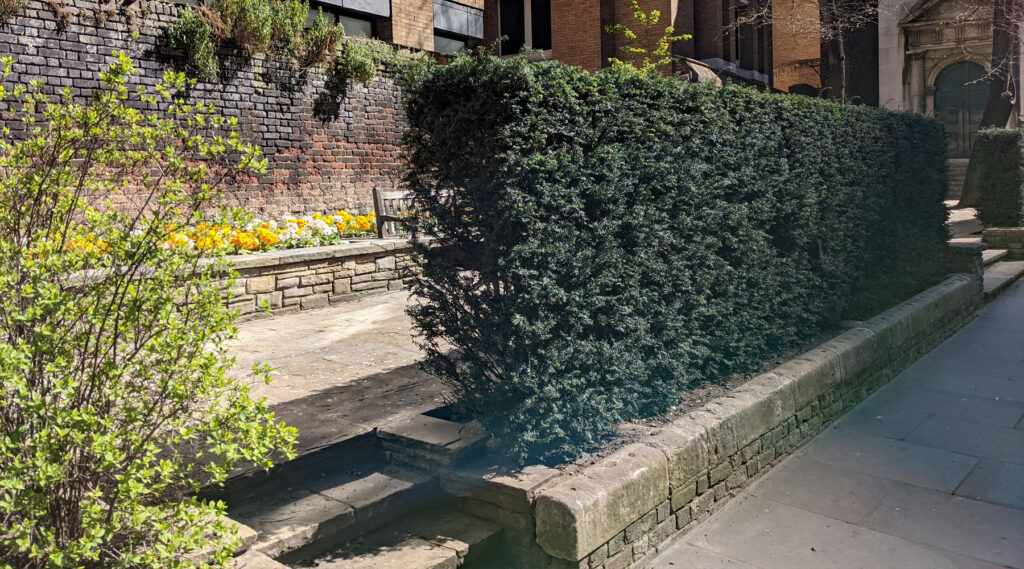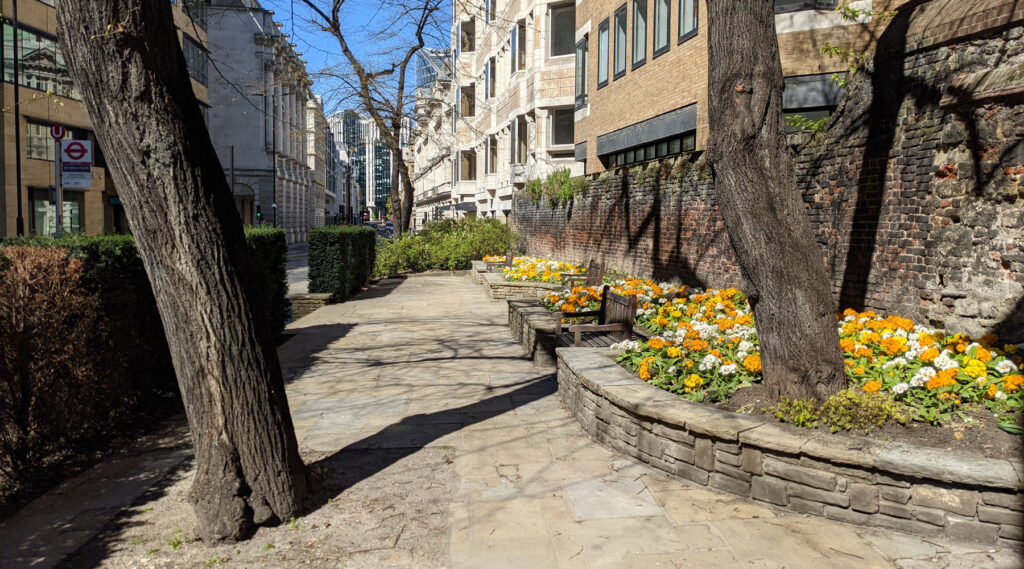This is a narrow stony pocket park with raised beds of flowers that sits on an old church graveyard overlooking London Wall.
The church, originally known as Allhallows on the Wall, sat right alongside the old Roman wall, the medieval upper portion of which you can see running behind the garden. The London Wall road used to curve around the church, with graveyards in front where this garden is, and behind where buildings are today.
For a couple of centuries though the front garden area was built on until the London Wall was widened in the late 1700s by removing a row of houses that had been there.
That left London Wall with a bit of a problem in that the road was wider, then narrowed sharply by the church, but presumably, that was deemed sufficient at the time.
There’s a drawing of the London Wall and church in 1810 here.
It seems that didn’t last though, as by 1829, the paved area in front was widened and given railings to provide a pavement around the side of the church, a layout which remains to this day if sadly lacking the railings.

View down a lane towards the new church of Allhallows, London Wall; a few town houses on the right. 1810 Watercolour (c) The Trustees of the British Museum
What is here now is a small raised public garden with a few trees and shrubs, York stone paving, some recessed benches and raised flower beds along the old City Wall.
Old fences have been replaced with hedging instead.
On a few walks past, I’ve seen people often using the garden to sit in, even though it faces a busy road. The spring flowers are a delightful burst of colour in an area that is otherwise a bit lacking in colour.
It’s not clear when the garden arrived, although it may have been in the 1860s when a number of churchyards were converted into gardens, but it can be seen here in 1896 looking very Victorian, and here in 1955 looking very similar to how it does today.
As an aside, go around the back of the church, and look at the old brick building. The foundation stone confirms that it was built in 1902, but why is interesting.
It was used as a shelter for workmen catching the cheaper workmens trains to the City that ran very early in the morning, but would have to hang around waiting for their workplace to open an hour or so later.
It was added after the rector of the church, Rev S.J. Stone had started opening the church from 6:30am to 9am to provide shelter for female workers arriving early in the morning. An average of 220 women would wait in the church each day. This led to the Church to having one of the largest congregations in the City at a time when many City Churches were seeing their congregations shrink as people moved out of the city.
Today that building is used as offices for the church.











Last time I walked past this place, it seemed to be the go-to for builders to smoke weed on their lunch break!
The area has gone to pot !
The north wall of the Church follows the exact line of the Roman wall, including a very small watchtower or postern semi-circle jutting out from the wall.